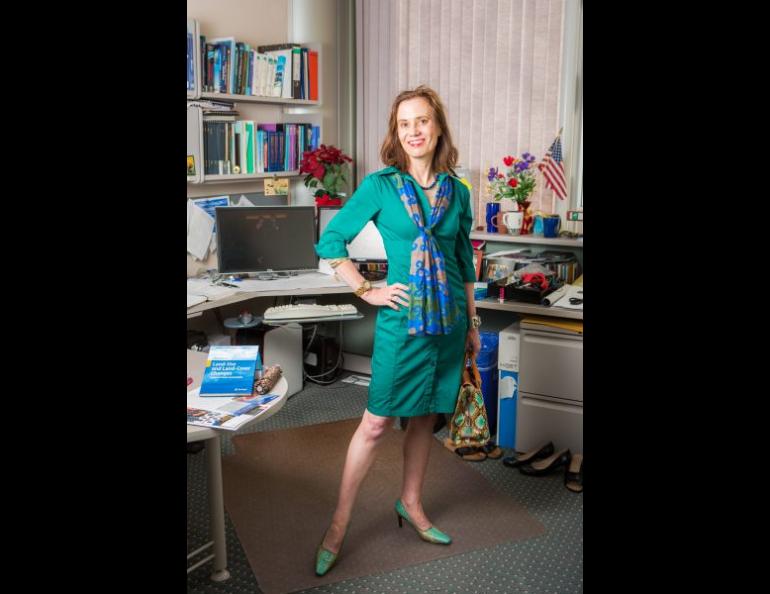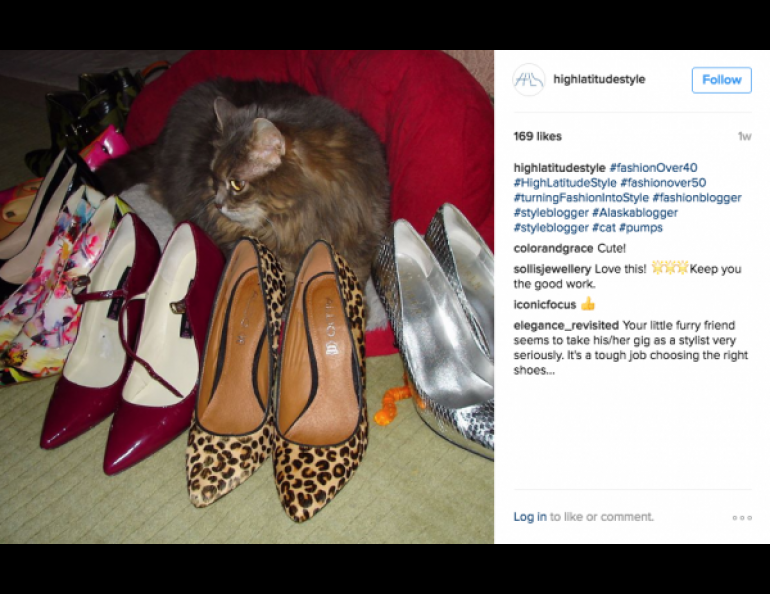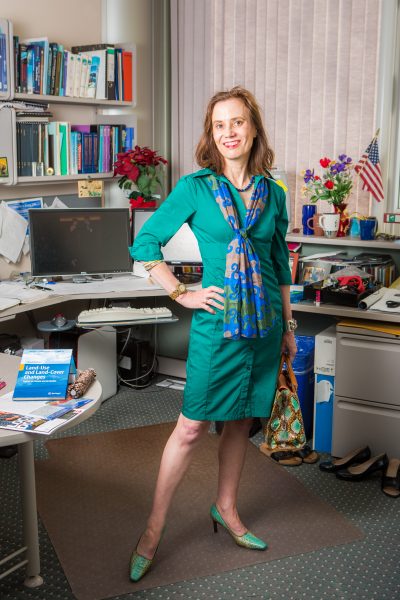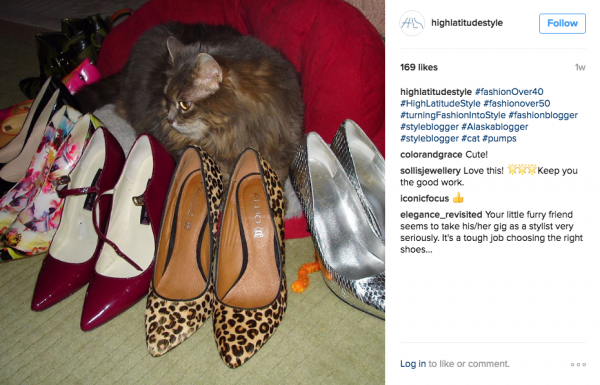

UAF’s Mölders blends interests in science, style
When Geophysical Institute atmospheric scientist Nicole Mölders was growing up in West Germany, women older than 50 were all supposed to look the same.
“They wore brown, black, gray or blue dresses or skirts. No color, to kind of blend in, be invisible,” Mölders said.
“That wouldn’t fit us baby boomers. We have been loud always. I like it, it’s always been me.”
Mölders’ interest in fashion and style developed early.
“As a little kid I always loved black, which of course for a toddler was not an allowed color.” Her mother chose her outfits each morning and Mölders often didn’t like them.
“We had very different tastes. She loved ruffles and embroidery and wide sleeves. I wanted sleek and tailored even as a young girl,” Mölders said.
As she grew up, Mölders also developed an interest in science. In the evenings, her father listened to shortwave radio broadcasts from all over the world. She remembers him discussing a broadcast from the Soviet Union about possible climate effects of a plan to reroute Siberian rivers for cropland irrigation in what is now Kazakhstan and Uzbekistan. She was fascinated that actions taken by humans — increased irrigation — could have consequences that would affect climate.
These interests eventually led to university studies and several advanced degrees in meteorology and related fields; two books on meteorology, climate and air quality; and in 2000 a three-month residency at the National Center for Atmospheric Research in Boulder, Colorado. At the library there, she saw an ad for a position at the University of Alaska Fairbanks in an academic publication.
“It exactly fit what I was doing and interested in,” she said. “The only thing missing on the ad was my name.”
She was accepted to a faculty position in the UAF atmospheric sciences department and moved to Fairbanks in 2001 with her husband Gerhard Kramm, also an atmospheric scientist.
Throughout her scientific career in Europe and in Alaska, Mölders never lost her interest in fashion and design. She took three years of silversmithing classes in college and still makes her own jewelry. In 2013, she launched High Latitude Style (https://highlatitudestyle.com), “an Alaska fashion blog with science bits for the stylish 40+ woman.”
“I want to encourage women of any age to wear what they want,” she said. “You should pick the stuff that you feel comfortable with and that you feel good with because that shows confidence.”
As she writes in the blog, “I love being a fashion blogger at this time in my life. Fashion is what you buy, style is what you do with it.”
Women in Alaska care less than women in Europe about what other people think about how they look, Mölders says. As long as they aren’t required to wear high heels, Alaska women seem to be more tolerant of someone being different.
Mölders and Kramm are avid ballroom dancers, providing Mölders with another medium for fashion through the essential vivid, flowing dance gowns. In 2015, she was invited to participate in Dancing with the Fairbanks Stars, a fundraiser at the Tanana Valley State Fair for the Lathrop High School ballroom dance team.
Her favorite dance is the Argentine Tango, but she and her partner Adam Dewey, a Lathrop dance team alumnus and UAF staff member, chose a Viennese waltz for the event. As in the television show of the same name, the contestants were evaluated by judges on their skills and by the audience, who voted with dollars, all to benefit the dance team.
“Adam and I came in third with our Viennese waltz, which was very hard to dance on such small stages and is one of the hardest ballroom dances there is,” Möelders wrote in her blog post about the event.
“The blog is my hobby,” she said. “I like writing that kind of thing, it’s fun. It’s relaxing. I have always liked to write.”
In one High Latitude Style post, she observes that not everyone thinks fashion and science are compatible, or that it is possible to be an Alaskan fashionista. Mölders is proof that this isn’t the case.
“I want to inspire women over 40 to express who they have become,” she said. “There is nothing more aging — visually and psychologically — than wearing what others think we should wear.”
LJ Evans, University of Alaska Fairbanks Geophysical Institute, 907-474-2737, ljevans@alaska.edu






